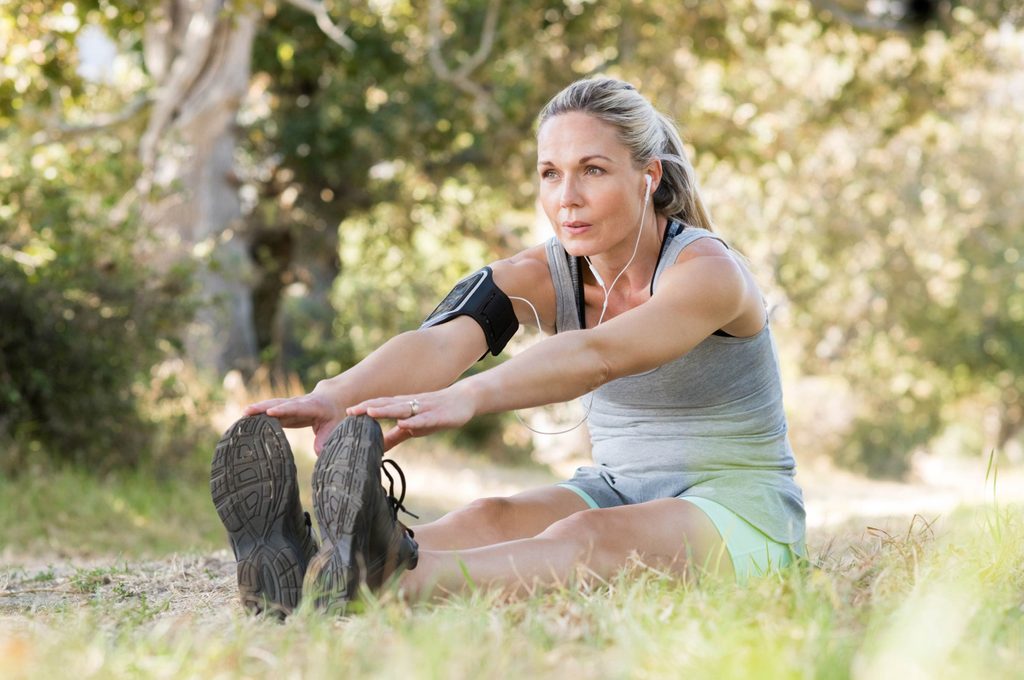Is It Still Important to Stretch Before a Workout?
Updated: Jun. 10, 2021
Stretching before exercise used to be touted as the a smart way to avoid injury. If you haven't seen many runners or weight-lifters trying to touch their toes lately, here's why.
 We’ve all heard time and again how important it is to stretch before and after working out to avoid injury. But a scientific analysis of studies on the subject turns that wisdom on its head. Instead, it shows the opposite: that stretching before exercise—especially static stretches, where you lengthen your limbs and hold the position for a count of say, 30 or 60 seconds—can actually cause more issues than it prevents, and can also hinder performance. “Static stretching while your muscles are ‘cold’ can actually increase the chance of injury,” says Jari Love, certified personal trainer and creator of the workout system Get Ripped.
We’ve all heard time and again how important it is to stretch before and after working out to avoid injury. But a scientific analysis of studies on the subject turns that wisdom on its head. Instead, it shows the opposite: that stretching before exercise—especially static stretches, where you lengthen your limbs and hold the position for a count of say, 30 or 60 seconds—can actually cause more issues than it prevents, and can also hinder performance. “Static stretching while your muscles are ‘cold’ can actually increase the chance of injury,” says Jari Love, certified personal trainer and creator of the workout system Get Ripped.
That doesn’t mean you should throw yourself full throttle into a workout right when you come to the gym off the street. You do still want to get your blood flowing and prepare your muscles for movement. You’re just going to do it differently. “Perform stretches that will mirror the exercises you plan on doing,” Love recommends. The stretches should be dynamic, which means performing gentle repetitive movements that gradually increase the range of motion within your normal range of motion.
So is static stretching completely out? Not exactly. “The best time to stretch is after a workout, or after working a particular muscle group,” Love says. Static stretches should be held for about 30 seconds. Keep in mind that a stretch should not feel painful. There might be a little discomfort before your muscles are flexible, but never push past that feeling of tension towards pain, or you’re setting yourself up to get hurt.
Here are Love’s three best post-workout static stretches:
- Seated hamstring stretch: Start with one leg straight in front of you and the other knee bent, allowing the bent thigh to rotate out to the side. Place your arms on the ground behind your pelvis and sit with a straight back, so that the posterior ligaments of the pelvis and spine are not loaded. Move your upper body forward until you feel the first sign of tension in your hamstring. Hold 30 seconds. Repeat on the other side.
- Standing hip stretch: While standing, take a step back with your left foot, and with a straight back, lower the other knee into a high lunge until you feel the first signs of tension in the front of your hip and upper thigh. Do not extend past the point where your front knee forms a 90 degree angle. Hold there for 30 seconds and return to the starting position. Repeat with the other leg.
- Supported back chair stretch: Kneel on the floor in front of a sturdy chair with your forearms crossed and resting on the seat of a sturdy in front of you. Breathe in, and as you exhale, let your head and chest sink below the chair seat until you feel the first signs of tension in your upper back. Hold the stretch for 30 seconds and feel your shoulders and upper back stretch.
